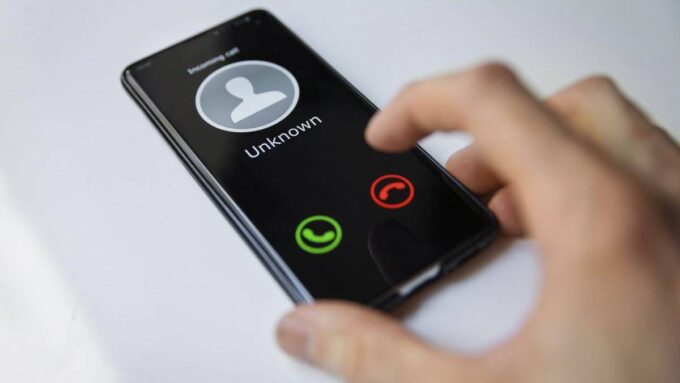In the world of communication, iPhones are renowned for their cutting-edge technology and superior user experience. Yet, a baffling 20% of iPhone users have reported difficulties with call forwarding—a staggering figure for devices synonymous with innovation. These iPhone enthusiasts encounter vexing issues where incoming calls are diverted straight to voicemail or outgoing calls are barred to specific contacts. The helpless sight of the spinning wheel under the iPhone’s call-forwarding settings is frustrating and somewhat surprising for a brand that epitomizes seamless functionality.
Tackling these complexities requires more than the standard fixes of toggling airplane mode or verifying the blocked contacts list. Users looking for Troubleshooting Call Forwarding iPhone solutions must delve deeper. This iPhone Call Forwarding Troubleshooting Guide is crafted to unravel the persistent Myriad of forwarding errors. Offering Effective Solutions for iPhone Call Forwarding Errors, the guide stands as a beacon for those lost in the maze of call misdirections and settings confusion.
Key Takeaways
- Recognize the prevalence of call forwarding issues among iPhone users.
- Understand the importance of moving beyond basic fixes for complex call forwarding problems.
- Identify the necessity for a comprehensive troubleshooting approach tailored for iPhones.
- Discover methods to resolve the infamous spinning wheel indicator signifying call forwarding glitches.
- Prepare to engage with Apple Support for persistent call forwarding issues, should they outlast typical fixes.
- Ensure your iPhone’s system updates are current to prevent call forwarding errors.
- Explore the possibility of resetting network settings as part of the troubleshooting process.
Understanding Common iPhone Call Forwarding Challenges
As communication technology evolves, so do the complexities of our everyday tools, leading to situations where users are left puzzled by features like iPhone call forwarding not working as expected. In this imperative exploration of call forwarding complications on iPhones, we delve into the intricate mesh of software and carrier interplay, casting light on how to fix call forwarding on iPhones and mitigate the inconveniences faced by users across the board.
Case Studies of Call Forwarding Problems
In real-world scenarios, such as those shared in Apple communities, we observe users grappling with an absence of call connection despite their phones indicating voicemail reception. A common quick fix for iPhone call forwarding limitations, like the one used by these individuals, involves the deactivation of LTE — a short-term solution that inevitably raises questions about its future repercussions on connectivity.
Software Glitches Vs. Carrier Issues
The crux of many iPhone call forwarding issues often boils down to a tug-of-war between native system settings and the functionalities provided by carriers. Identifying whether the root of the problem is a misstep in settings or a more profound system error is essential for grasping the best ways to resolve iPhone call forwarding problems, and it can dictate the need for professional support when necessary.
The Spinning Wheel Dilemma
The infamous ‘spinning wheel’ observed in call forwarding settings is emblematic of unresolved conflicts, typically alluding to either system glitches or carrier-service discrepancies. Advocated by multiple user experiences, solutions have emerged such as the disabling of LTE, reinforcing its notoriety in relation to call forwarding. For persistent issues, remedies may extend to a network settings reset or seeking solace in iOS system repair tools such as Joyoshare UltFix.
| Issue | Possible Cause | Recommended Action |
|---|---|---|
| iPhone Call Forwarding Not Working | Disabled in Settings | Check and enable Call Forwarding in iPhone Settings |
| Spinning Wheel in Settings | Software/System Glitch | Restart iPhone and reset network settings |
| Direct Voicemail Routing | Carrier Service Issue | Contact Carrier and verify service settings |
| Missing Save/Done Option | User Interface Bug | Update iOS to the latest version |
Fix iPhone Call Forwarding Not Working with Top Ways

Source: linkedin.com
Experiencing difficulties with iPhone Call Forwarding Not Going Through can be a source of frustration for many iPhone users. When essential call management functions falter, knowing the Effective Solutions for iPhone Call Forwarding Errors can restore the seamless experience users expect. Here’s a compiled list of solutions to solve persistent call forwarding problems on your iPhone.
- Re-enable Call Forwarding: Sometimes, simply toggling the call forwarding setting can jog the feature back to functionality. Navigate to Settings > Phone > Call Forwarding and switch it off and on again.
- Restart Your iPhone: A reboot can clear temporary software glitches. Hold the side button and either volume button until the power off slider appears, then slide to turn off. Turn on the iPhone after a few moments.
- Toggle LTE and Airplane Mode: Turn off LTE by going to Settings > Cellular > Cellular Data Options and tap Enable LTE to off. Additionally, switch Airplane Mode on and off to refresh your network connection.
- Network Settings Reset: Go to Settings > General > Reset and tap on Reset Network Settings. This move could clear any network-related issues affecting call forwarding.
- Use Joyoshare UltFix: This iOS system repair tool can address deeper software issues without causing data loss. It’s a technical fix for persistent system errors disturbing call forwarding functions.
- Contact Support: Should all else fail, reaching out to Apple Support or your carrier’s customer service, such as AT&T, can shed light on whether the issue is software or hardware in nature. Professional guidance can be invaluable in resolving complex issues.
If you’ve tried troubleshooting and yet find iPhone Call Forwarding Not Going Through, it may be time to look into more detailed solutions or get professional assistance to ensure effective communication.
Conclusion
Navigating the intricacies of iPhone call forwarding is essential for maintaining connectivity in today’s fast-paced world. When faced with issues such as calls being directed straight to voicemail or the notorious spinning wheel in the settings, it is crucial to employ a structured approach to resolve these challenges. This iPhone Call Forwarding Troubleshooting Guide has dissected the common hurdles iPhone users encounter and delineated between software hiccups and carrier-related complications, providing a clear path toward remediation.
The avenues to effectively address call forwarding glitches on your iPhone involve initial troubleshooting methods such as checking settings and rebooting your device. For the more stubborn instances, solutions escalate to technical maneuvers utilizing iOS system repair tools like WooTechy mixer, known for their efficacy in rectifying such anomalies. These steps underscore the importance of systematic and informed troubleshooting, fostering a sense of self-reliance amongst iPhone users.
However, if the outlined strategies fall short, reaching out for professional aid becomes imperative. Seeking support from Apple or your respective carrier ensures a comprehensive examination of the issue at hand, thus permitting users to regain confidence in their device’s call management capabilities. With this iPhone Call Forwarding Troubleshooting Guide, your quest to learn How to Fix Call Forwarding on iPhone should be met with success, keeping you connected to your world without interruption.

Source: gearrice.com
FAQ
What are common issues with iPhone call forwarding?
Common issues include calls going directly to voicemail, call forwarding not activating or deactivating properly, a persistent spinning wheel under Call Forwarding settings, and the inability to make outgoing calls to specific numbers. These issues may arise from software glitches or conflicts with carrier services.
How can I troubleshoot call forwarding issues on my iPhone?
Effective troubleshooting steps include resetting network settings, ensuring your iOS is up to date, turning off LTE, toggling airplane mode on and off, checking “Do Not Disturb” mode, and checking for blocked contacts. If these steps don’t work, you might need to contact Apple Support or your carrier for further assistance.
What does the spinning wheel mean under iPhone Call Forwarding settings?
The spinning wheel typically indicates a problem with the system connecting to your carrier to set up call forwarding. It could signify a system glitch or conflict between the iPhone’s settings and the carrier’s service. You might need to restart your device, refresh your network settings, or turn off LTE temporarily to resolve this.
Can LTE interfere with iPhone call forwarding?
Yes, there have been instances where disabling LTE has helped resolve call forwarding issues. LTE might interfere with call forwarding because of poor signal conditions or incompatibility with particular carrier settings. Disabling LTE, though a workaround, can sometimes help in successfully activating call forwarding.
What should I do if my incoming calls are going straight to voicemail?
First, check if your Do Not Disturb mode is activated, as this can reroute incoming calls to voicemail. If not, ensure Call Forwarding is not accidentally turned on. If neither of these solutions work, try resetting your network settings or contact your carrier to make sure there are no issues on their end.
Is there a tool I can use to fix system issues that are causing call forwarding errors?
For software-related call forwarding problems, iOS system repair tools such as Joyoshare UltFix or WooTechy iPhixer can be helpful. These tools aim to fix iOS system glitches without losing your data, which could resolve call forwarding errors.
What should I do if none of the troubleshooting steps fix my iPhone call forwarding issue?
If you’ve tried all common troubleshooting steps without success, your next step is to contact Apple Support for further guidance. It’s also a good idea to reach out to your carrier, as there may be specific settings or issues on their end that need to be addressed to resolve your call forwarding problems.



